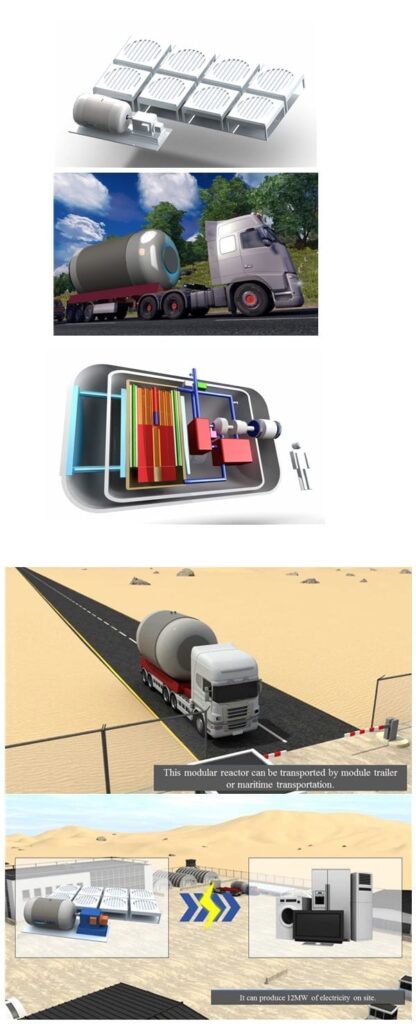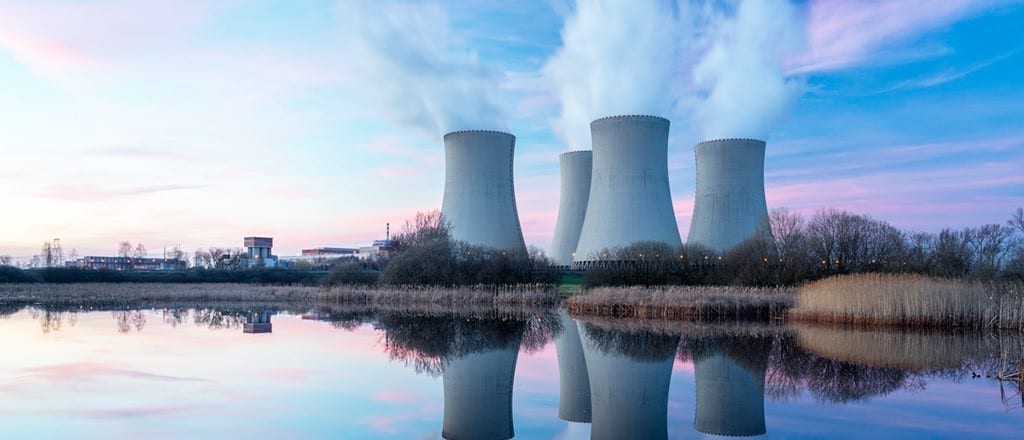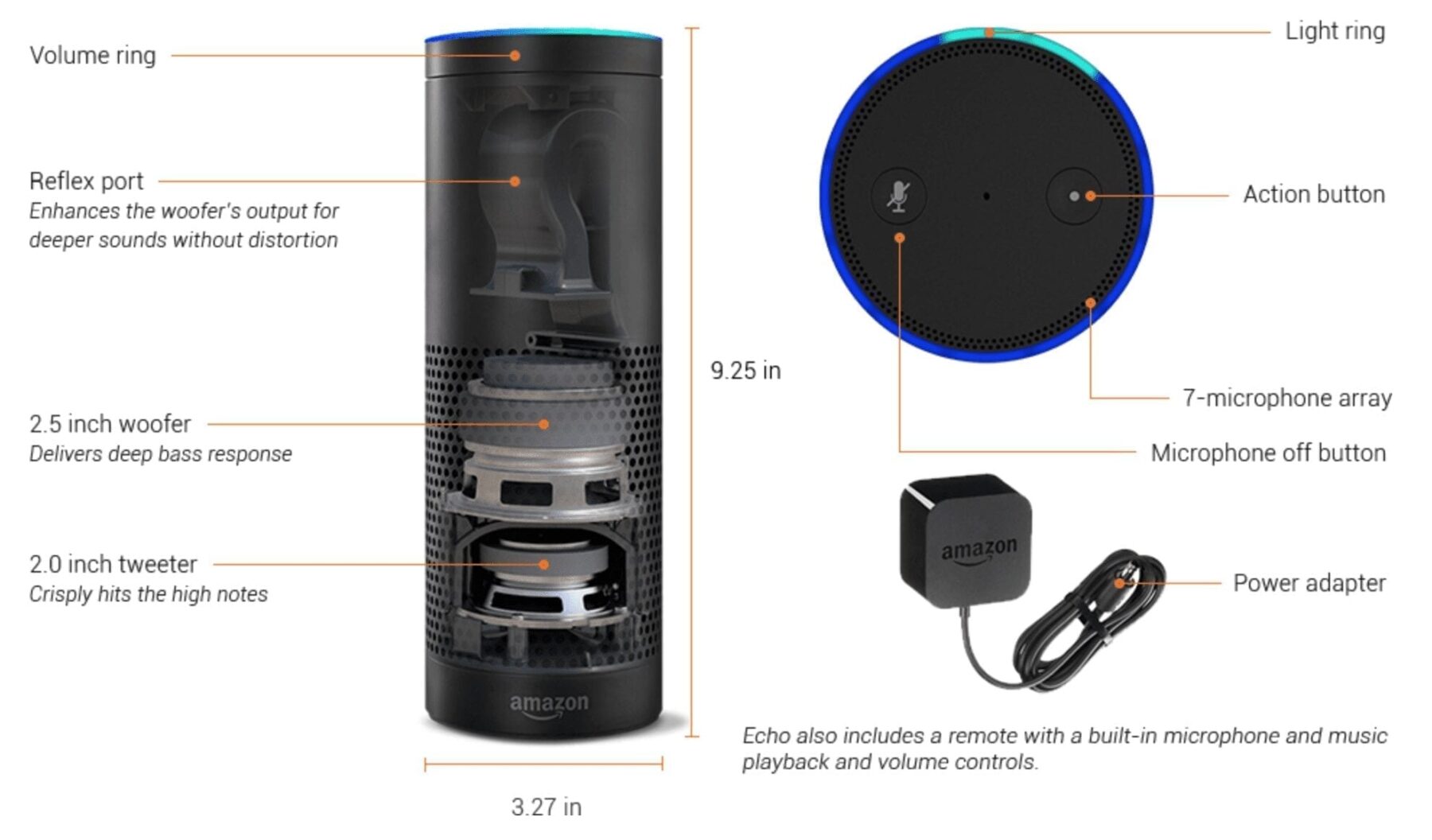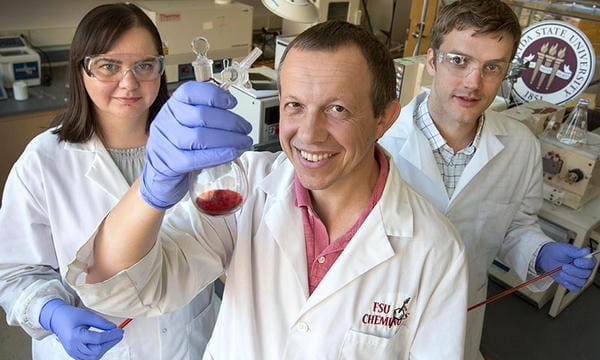
Throughout the world, interest is moving towards small modular reactor systems.
Although most currently proposed designs have succeeded in decreasing the size, they have not been able to completely modularize the whole reactor. To break these limits, the supercritical CO2 Brayton cycle was chosen over the steam Rankine cycle as the power generation cycle. Also, the proposed reactor is a gas cooled reactor that can run without refueling for 20 years. The power generation cycle is integrated with the reactor to further modularize it.
To guarantee its safety over a long operational time, new designs that have not been used in conventional large reactors were adopted in the power generation system.
The development of the proposed reactor will allow nuclear power to contribute not only in power generation but also in energydependent industries like offshore plants, the heavy chemical industry, and the steel industry, which would ultimately reduce greenhouse gas emissions. Furthermore, an energy supply for extreme environments (polar areas, deserts, space, etc.) will be available for long periods of time.
Existing small modular reactor designs usually use water as coolant and oxidized uranium as fuel. Although these may be good choices in making large reactors economical, there are economical limits when the capacity is reduced.
The present research aims to overcome these issues by adopting a supercritical CO2 cooled micro modular reactor (KAIST MMR) concept that uses a long period core, which runs for more than 20 years without refueling, with supercritical CO2 as coolant and uranium-nitride as fuel. Also, by actively adopting the supercritical CO2 power system, designated as one of top 13 industry engine projects, a research team comprised of Prof. simplified the power conversion system and developed a new nuclear power system that can passively remove the decay heat in the case of reactor shutdown to avoid another Fukushima accident.
The team’s main research achievement, the feasibility of downsizing and modularization of nuclear power plants, was confirmed by designing the reactor core and power generation system in one vessel.
Also, in terms reactor design, uranium-nitride, suitable for long period low enriched uranium fast reactors, was selected, and the dynamic properties and variables for nuclear reactor control were designed and evaluated. In the power generation system, the small sizing and high efficiency advantage of the supercritical CO2 power conversion system was actively utilized to create a very simple and high efficiency system. Moreover, PCHE, a next generation heat exchanger that adopts the semiconductor manufacturing process, was used, and the technical accomplishment of using radial urbo machinery, which is not used for large reactors, was achieved.
As seen in the Fukushima accident, nuclear reactors produce large amounts of decay heat even after shutdown, and if external power source is not provided, catastrophes can happen. To avoid such outcomes, the proposed KAIST MMR (Micro Modular Reactor) consists of a passive heat removal system that can cool the reactor with natural circulation in case of reactor shutdown.
Learn more: Supercritical CO2-cooled micro modular reactor
The Latest on: Supercritical CO2-cooled micro modular reactor
[google_news title=”” keyword=”Supercritical CO2-cooled micro modular reactor” num_posts=”10″ blurb_length=”0″ show_thumb=”left”]
via Google News
The Latest on: Supercritical CO2-cooled micro modular reactor
- USNC and Peregrine collaborate on advanced energy systemson April 18, 2024 at 12:12 pm
(USNC) and Peregrine Turbine Technologies (PTT) are to collaborate with the aim of integrating USNC’s Pylon reactor with PTT’s patented supercritical CO2 (sCO2) energy conversion system and advanced ...
via Bing News











